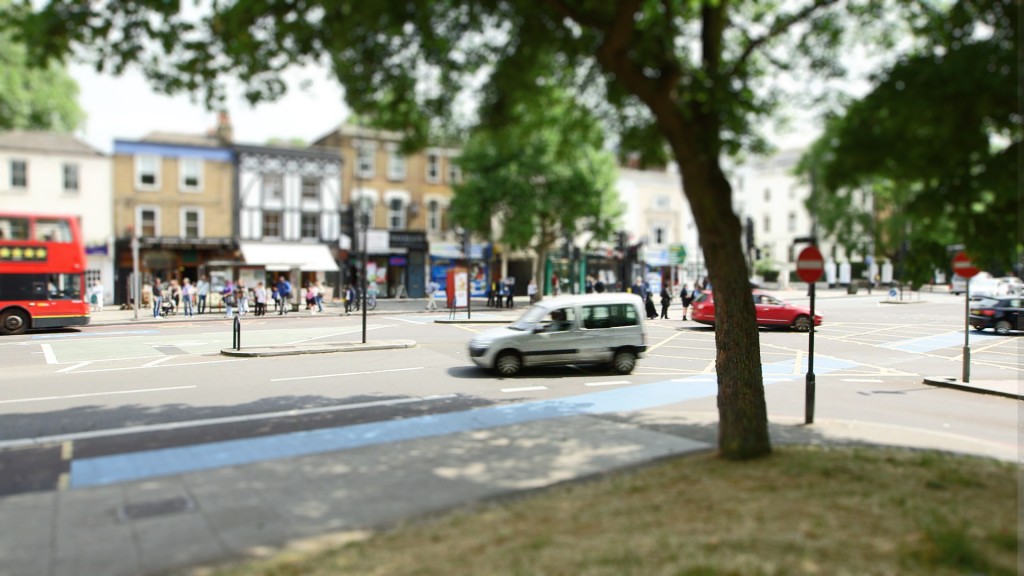I am Chelsea from Flashlight TV and this week I have been working on shooting timelapses and fast motion, as well as experimenting with the tilt shift technique.
It was my aim to effectively capture London at its busiest, so I set out to some of the more crowded areas of London to film both people and traffic. Using the Canon C300 with a 16-35mm lens, I first shot timelapse footage using the interval settings on the camera. Timelapse is a technique where frames are captured at set intervals, therefore when it is played at normal speed, the footage appears to be moving faster. The number of seconds between each frame and the amount of activity in the shot contribute to how smoothly the action flows. For the clips shot in Oxford Circus, the intervals between frames were set at 5 seconds. This meant that for every 5 seconds, a frame was recorded. Since there are 25 frames in a second, to capture a total of just 1 second of footage, the camera had to be recording for at least 2 minutes and 5 seconds. I decided to change the intervals to 3 seconds at Clapham Common and this made the timelapse appear a lot smoother. My shutter speed was set at 1/50, however, if I wanted to add some motion blur to the timelapse, I could have lowered the shutter speed.
I also experimented with fast motion which meant shooting at 10 frames a second, over half the normal frames per second. When played back at 25 frames a second, the video appears sped up. I did also shoot at 50 frames a second which plays back in slow motion, however this did not accurately convey the rush of the crowds.
Tilt shifting is used to create ‘miniature’ scenes by focusing on one area of the frame shot at a wide angle. Large objects such as buildings and trees look as if they have become objects from a toy train set.
The tilt shift technique was all edited into the footage in After Effects. Ideally, a tilt shift lens would have produced the best results however, the post-production technique does look quite effective. To do this, I first had to create a solid black layer over the top of the footage. I then added a light sweep effect set horiontally across the area of the shot that would be in focus. A fast blur effect was added to the light sweep and then applied to the original clip once the effect had been inverted. The result is a shot with the top and bottom thirds blurred out with just a horizontal plane of focus on the main subject. The intensity of the blur could be adjusted and the timelapse speeds up the motion of the ‘miniature world’.
Considering this was shot without a tilt shift lens, the results are definitely noticeable. The crowd of people by the bus stop look like miniature figurines whilst the buildings appear to have shrunk to a model size. To improve the effect however, a wider angle would have been better and from a higher angle as well. Objects in the foreground ruin the effect since they appear larger.
So, some tips to bear in mind when attempting the tilt shift technique without the tilt shift lens:
- Shoot as wide as possible – the subject of the frame should be as small as possible to achieve the best results.
- Shoot as high as possible – this gives the effect that we are looking down onto a small scene.
When used creatively, timelapse, tilt shifting and fast motion can create some very unique perspectives and can become an interesting addition to your showreel.
